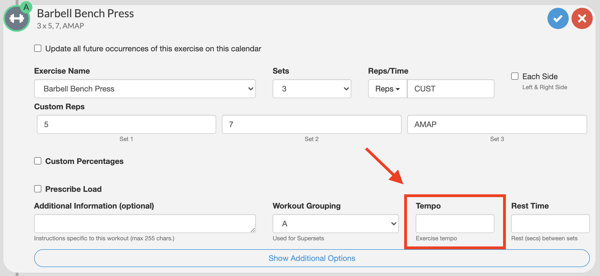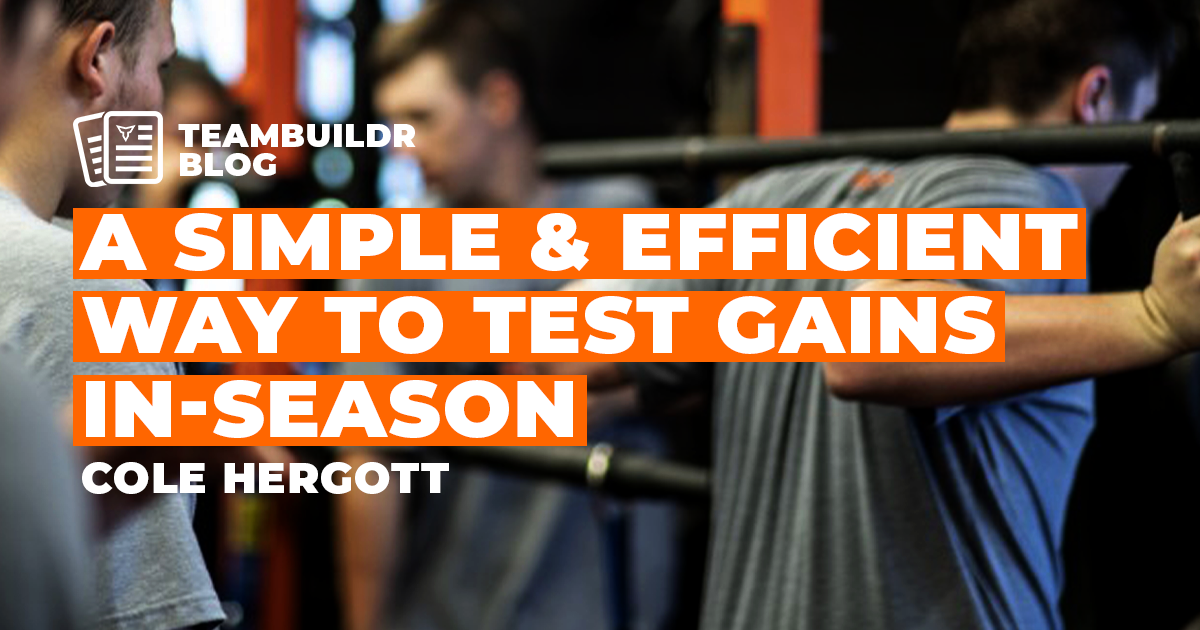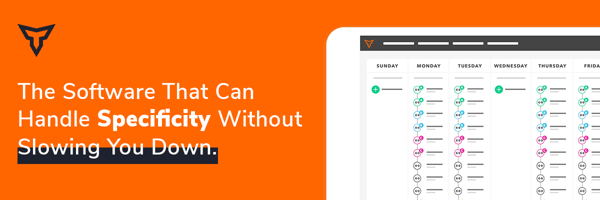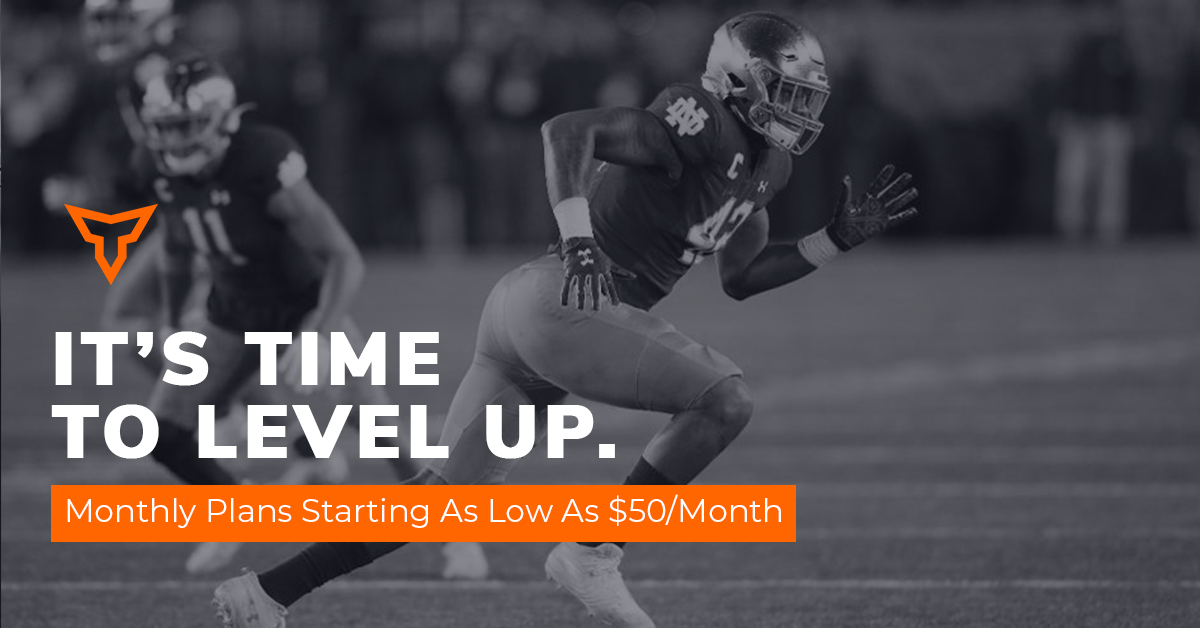What Is Tempo Training?
Tempo training is defined as the execution of a movement pattern under a prescribed time per each phase of movement.
Normally we break down training using tempos with a specific diagram (x-x-x). Let’s use (3-2-1) as an example: The “3” represents the eccentric (muscle lengthening) portion of the lift, the “2” represents the isometric (end range of motion isohold) portion of the lift, and the “1” represents the concentric (muscle contraction) portion of the lift.
Ex: Squat (3-2-1) = 3 seconds going down, 2 seconds holding at bottom of squat, 1 second coming back up to standing position
Why Use Tempo Training?
Tempo training is prescribed to establish two things:
- Build neuromuscular control over the movement pattern at hand
- Increase time under tension (TUT) to increase hypertrophy of the muscles utilized.
For example, the squat is a simple movement to teach, but difficult for some to process and understand. Think of a time when you were teaching the squat to an athlete. They probably tried to do it too fast with a ton of movement compensations and errors right?
Less tenured athletes in the weight room actually benefit from training using tempos in longer programmatic cycles than higher tenured athletes. If we slow down the movement pattern on a specific tempo, we can establish a base of motor control to increase movement efficiency and management of higher loads.
Considerations Prior To Prescription
There are questions you need to ask yourself ahead of time:
#1. What is the goal of the phase?
If the goal of the phase needs higher velocity movement to succeed then tempo training probably isn't going to benefit the athletes. Now this is not to say that I don’t add tempo-based prescriptions in late off-season and in-season programs, but make sure your “why” matches up with your athletes needs.
#2. What does the athletes schedule look like day to day?
Tempo training takes up more time. If you only have 30 minutes in a session how much TUT can you spare before you get over the time limit?
# 3. What have your athletes been doing in the early off-season and in practice
Practice can be a tricky one to manage. Coaches sometimes go off script, not realizing how it may affect our macro cycle in the offseason. A great example of such is in baseball. Let’s say the head coach has his position players retrieved 150-200 grounders - utilizing tempo on hinge motions may not be the best choice for that specific day. Remember as strength coaches, we must be adaptable to the demands of our environment.
# 4. How tenured are my athletes?
Beginners and novices normally need a lot more tempo work when it comes to the weight room due to modern day lifestyle. What I have found in my journey as a strength coach is that most beginners require a minimum 4-8 weeks of tempo work to fix up their form while building size, strength, and motor control.
How To Implement Tempo Training
Now that we understand the considerations, it's time to practically implement it. I have two examples listed below based on tenure of athletes. Included are definitions of the tenure categories, weeks of training that I have found useful in my time coaching, and practical weekly breakdowns.
Non-Tenured Athlete (0-2 years of consistent training)
4-8 weeks needed
If you have beginner or novice level athletes in the weight room, you will quickly see that utilizing tempo training has many benefits.
Squat Tempo Examples: (3-2-1) or (5-1-1)
I have found these tempos to be the most efficient, providing enough variation while simultaneously allowing the athlete to “feel” each phase of the moment and push themselves. A side effect for less tenured athletes is the effect of delayed onset muscle soreness (DOMS) and may take longer for them to recover.
Here are some key points of how I have prescribed training using tempos for a novice tenured athlete:
- Primary lifts are MWF
- Squat (M) / Bench Press (W) / Deadlift (F)
- Tempo (3-2-1)
- Volume at 2-5 x 4-6
- Mobility on off days (Tu/Thu/Sa/Su) to offset effects of DOMS completed as needed
- Deadlifts on programmed on Fridays because I like to give at least 48-72 hours of recovery time since it is such a taxing lift
Add Tempo To Your Programming In TeamBuildr

High-Tenured Athlete (2-4 years of consistent training)
1-3 weeks needed
I use the same (3-2-1) / (5-1-1) break downs for my intermediate and advanced athletes. There are usually less weeks than the nontenured athletes due to fact that their foundation and tenure for the specific movement patterns is already built. Think of the athlete like a house that you are building - once a house has a good foundation, it can be built upon to a greater extent.
Below is a breakdown of how I have prescribed training for my higher tenured athletes, as you can see it is a little different and little more complex:
| Day | Emphasis | Volume |
| Mon | Squat (3-2-1) | 3-5 x 5-8 |
| Tue | Bench Press (3-2-1) | 3-5 x 5-8 |
| Wed | Mobility Drills/Recovery | As Needed |
| Thur | 2-board bench or OHP (dynamic) | 3-5 x 5-8 |
| Fri | Deadlift (5-1-1) | 3-5 x 4-6 |
| Sat | Mobility Drills/Recovery | As Needed |
| Sun | Mobility Drills/Recovery | As Needed |
- Tempo lifts are still MWF
- Dynamic Movement day is added to increase blood flow
- Deadlift tempo has changed as well as the total volume
- As athletes grow in tenure the need for more frequent training increases
Conclusion
Tempo training can be incredibly beneficial if executed properly in a year long training plan. Please take and modify my models as needed.
However, if you are working with high level division one, professional, or Olympic athletes, I highly recommend reading Cal Dietz and Ben Peterson’s book “Triphasic Training: A Systematic Approach To Elite Speed And Explosive Strength Performance”.
Best of luck as we return to training in the weight room! Please reach out with any questions or if you would like to connect. The best email to reach me is KTelegadas1993@Gmail.com or direct message me on Instagram (Coach_Telegadas).
Subscribe to our blog
Subscribe to receive the latest blog posts to your inbox every week.
Related posts

A Simple & Efficient Way to Test Gains In-Season
Private Facility Summer Training That Delivers: Building More Explosive Athletes



